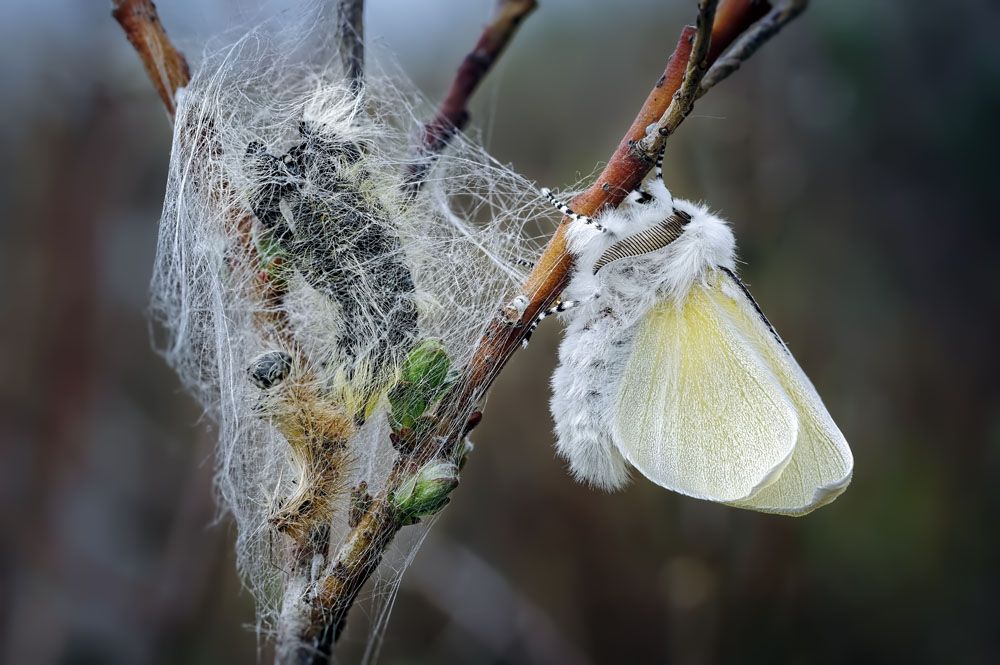
Satin Moth – Leucoma salicis
Satin Moth (Leucoma salicis)
Common Name: Satin Moth
Latin Name: Leucoma salicis
Appearance:
The Satin Moth endures several life stages, however, the adult moth possesses unique characteristics:
The wings of the mature Satin Moth are mostly white, resulting in a glossy look reminiscent of satin. Female individuals possess wings that are wider in span compared to those of males. The wingspan of the species can vary between around 1.2 to 2 inches (3 to 5 cm). The body is commonly adorned with white or light scales.
Host Plant:
Satin Moth larvae mostly eat trees that lose their leaves in the fall, especially willow, poplar, and other trees in the Salicaceae family.
Territory:
Satin Moths can be found in different parts of North America, Europe, and Asia. They live in places with host plants that are good for them, like woods, fields, and cities with lots of trees.
Damages caused by Satin Moth:
Satin Moth caterpillars, which are the juvenile stage, are known to kill host trees by eating their leaves. Many of these worms can eat the leaves off of trees, which could stress and damage the trees. Healthy trees can usually grow back after losing leaves, but diseases that happen often or badly may hurt the tree’s health overall.
Life History and Habitat:
Life Cycle:
There are four steps of development for the Satin Moth: the egg, the larva (caterpillar), the pupa, and the adult.
- Egg:In the spring, adult female moths lay their eggs on the undersides of leaves.
- Larva:The eggs are laid, and the caterpillars grow from them. They eat the leaves of host plants. As they grow, they go through several moults.
- Pupa:When a caterpillar is fully grown, it pupates. This generally happens in a silk cocoon that is connected to the host plant or a nearby surface.
- Adult:When the adult moths come out of the pupae, they mate and the cycle starts all over again.
